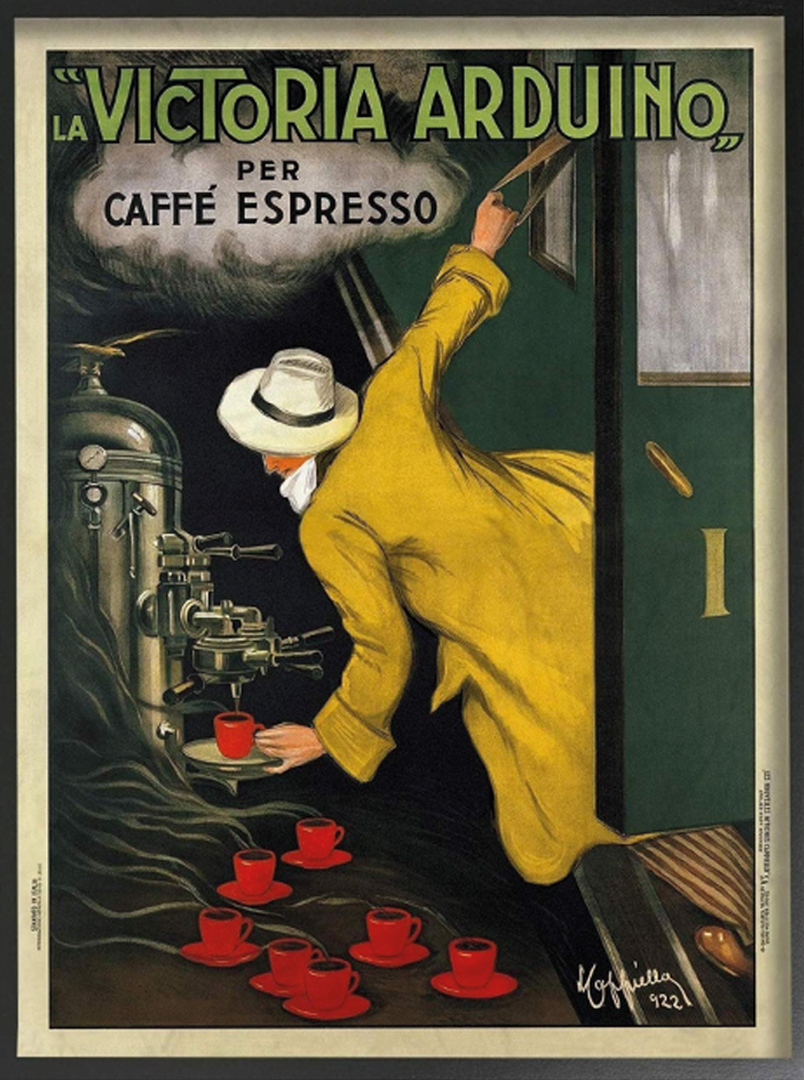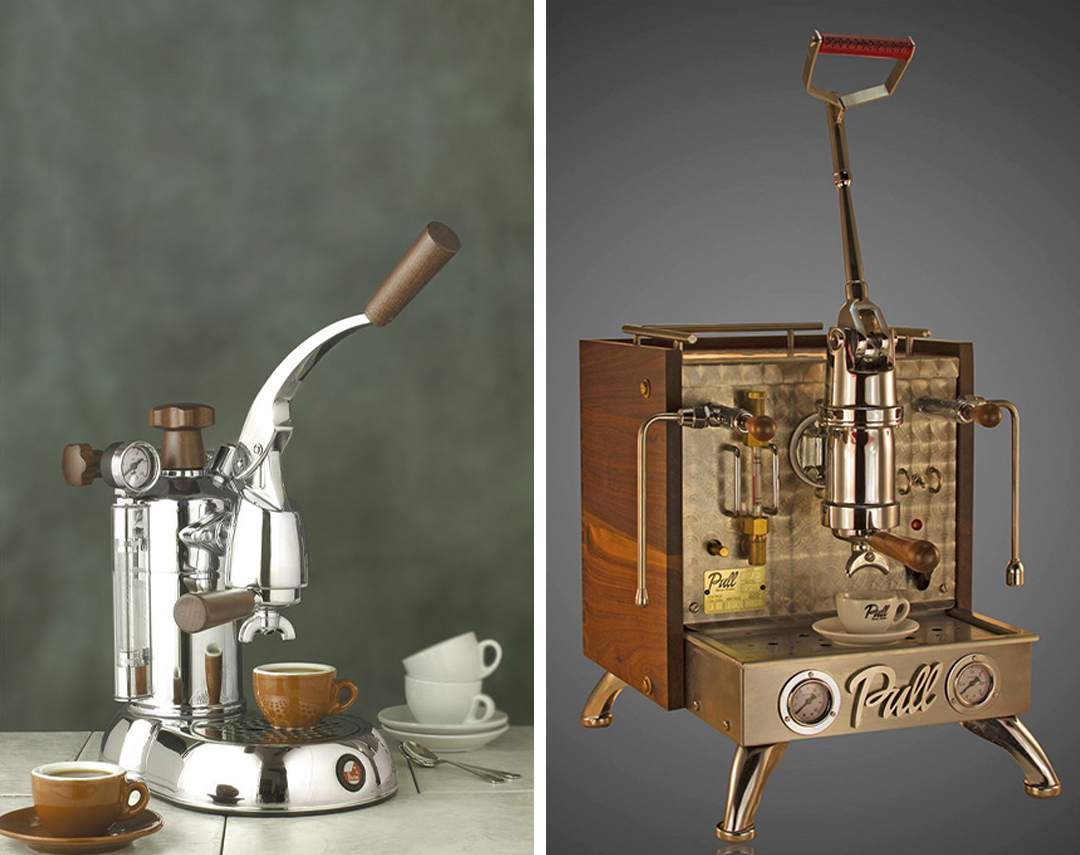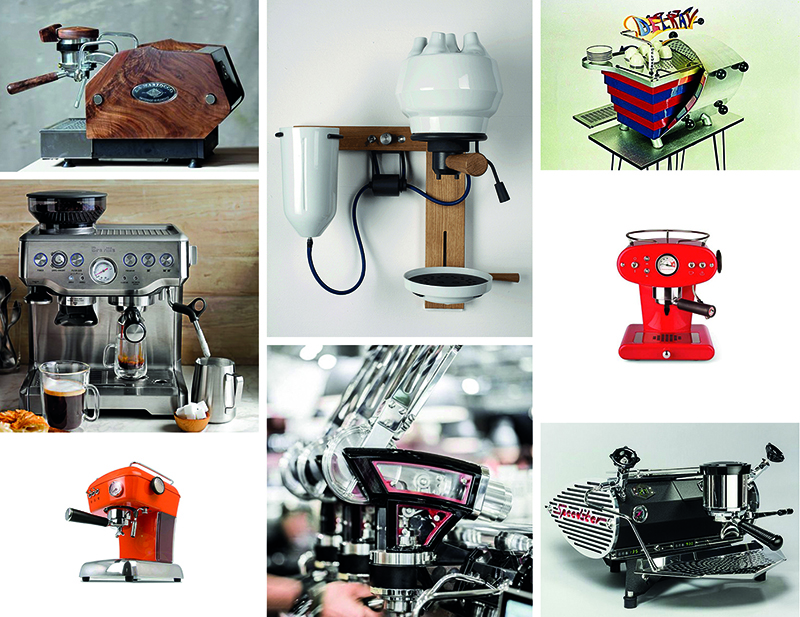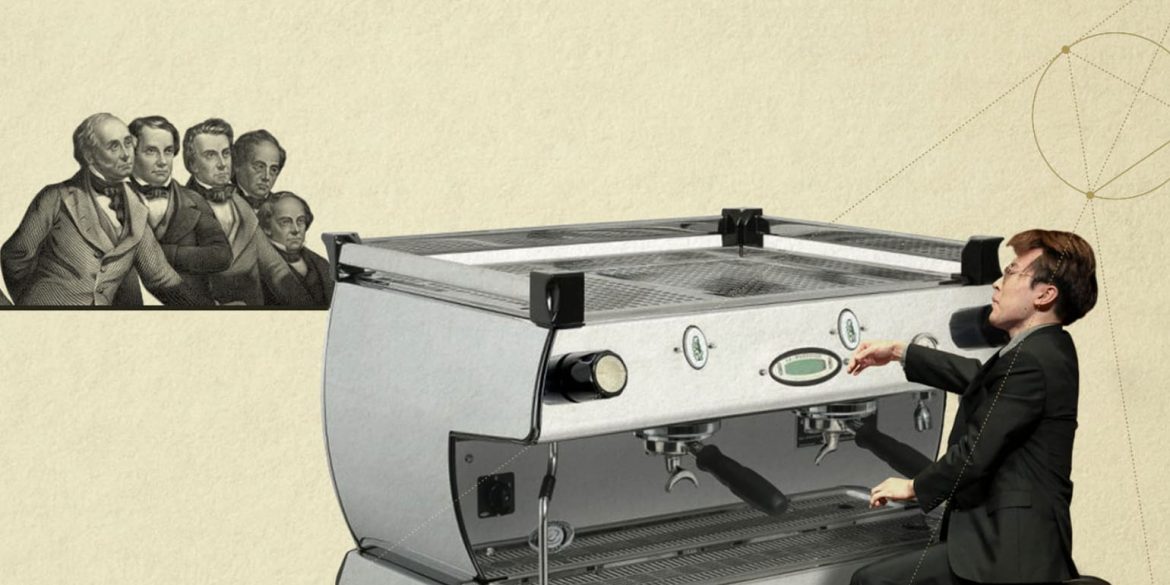This column is a paean to Espresso machines—their beauty, ingenuity and Eden-like diversity. It is about this much loved, yet somehow under-appreciated component of the unique status that coffee occupies among the commodities we consume.
Design has been a part of coffee’s changing dynamic. A global culture has formed around it. Its progression is a complex interplay of technology, commerce, cultures—and therefore, design. Design, not simply because ‘everything is designed’ but because the espresso machine exemplifies design’s traditional role as an improvement on craft, and later, manufacture, by the creation of objects and traditions of beauty. Thus this column speaks of beauty as a worthwhile human end, but yet one of social and economic consequence.
It is brewed in a variety of ways, but one method bosses the rest: the Italian espresso, in which hot water is forced under high pressure through a basket of ground coffee clamped to the pressure head.
Coffee is unique among the commodities we consume. Though it has likely been traded and sipped for five centuries, its story is a twentieth century one, making it an icon of modernity like no other produce. It has seen a century of profound transformation, alone in being reborn in terms of how it is made, served, sold and regarded.
To make coffee, you grind roasted beans and combine the grounds with very hot water to extract a dark liquid. It is brewed in a variety of ways, but one method bosses the rest: the Italian espresso, in which hot water is forced under high pressure through a basket of ground coffee clamped to the pressure head.
First, American style bars with a counter at which customers stood, had started to become popular in Italy, gradually replacing the European coffee establishment which served it at tables.
The invention that re-booted coffee was the espresso machine for which the earliest patent dates to 1901. But Pavoni’s 1905 Ideale, the first commercially available machine might well mark modern coffee’s year zero. A hand cranked lever forced steam from a vertical fired boiler, pressing water through the coffee, giving espresso its name. Pavoni is still a prominent manufacturer, and many of the cultural, commercial and technical factors behind the machine’s success apply today 120 years later.

First, American style bars with a counter at which customers stood, had started to become popular in Italy, gradually replacing the European coffee establishment which served it at tables. The machine’s vertical boiler gave it a counter-friendly footprint. The machine stood grandly on the countertop and this had further design consequences.
The machine’s beauty created an emotional bond between barista and machine. Each cup was individually made for the customer, outdoing the existing batch-mode European style cafes.
The machine’s metallic surfaces afforded, and required decoration, giving a dramatic flourish to the establishment. It drew the consumer to the bar, becoming a link between patron and barista (as he was soon to be named, in response to barman) who could ‘perform’ the coffee. The machine’s beauty created an emotional bond between barista and machine. Each cup was individually made for the customer, outdoing the existing batch-mode European style cafes. Serve time was quick, perfect for limited space. Theatre, art and commerce combined.
Ask an espresso machine manufacturer of today how they conceive machines, and you will hear much of the previous paragraph.

For the next four decades, the machine’s mechanics improved, but the coffee of the time was more like today’s filter coffee than like today’s intense espresso. Those magnificent machines could manage lower pressures (about 1.5 bars, or 1.5 times atmospheric pressure), unlike the 9-bar brewing pressure available to even compact home machines today.
That changed in 1948 with Gaggia’s 9-bar hand pump machine. Its high pressure introduced the ‘crema’ or stiff creamy foam atop the coffee, which is considered the mark of a well extracted coffee with a rich flavour profile. Finally the first electric machine, the 1961 Faema, became the father of the modern commercial machine. Since then, improvements have only focused on automation, and electronic stabilisation of machine’s thermodynamics, bringing greater predictability to the perfect shot.
These last events have frozen the world’s idea of the perfect shot. Since then, Italy’s influence over coffee culture became hegemonic, disproportionate to the size of its exports. While it was built on the tailwind of domestic demand, and a golden period of industrial excellence, it has been amplified by the American fascination for coffee, on the back of a west coast culture of well heeled sophisticates.
But coffee is unique in other ways. Espresso was born of technology, in a cafe. Yet home-brewing of Italian-style coffees has become a hot trend, a cross between a nerdy hobby, a means to an affordable cup and a marker of urban style and potency.
For cafes that spread around the world, branding, not materials or technology are the barriers to entry. Brands around the world must pay obeisance: A connection with Italian culture and terms is near-obligatory. Italian origins help (the Costa promoters were Italian emigres to the UK). Starbucks has done the most to make a mass cult of specialty coffee, cleverly diluting Italian coffee bars with seating, and menus filled with milk based recipes in supersized servings (with Italianate names like venti and grande).
But coffee is unique in other ways. Espresso was born of technology, in a cafe. Yet home-brewing of Italian-style coffees has become a hot trend, a cross between a nerdy hobby, a means to an affordable cup and a marker of urban style and potency. Machine makers have responded with affordable, compact machines. Cafes and kitchens coexist.

Each of these threads is visible in machine designs, which are objects of frank adoration. Enjoy a 1930s fascist aesthetic, or the industrialist steel of the classic cafe machine filled with needle-gauges. Smile at a witty recalling of 1950s brutalism, revel in the opulence of Art deco, soak in the West Coast style redolent of American diners and Cadillacs. Or just a counter with only a spout visible, machine controlled by a mobile app. Conceptual designers explore musical instruments or nature as inspiration, and there’s a market for one-offs.
All these exist on the back of the founding values that guided espresso’s Italian pioneers: a marriage of beauty to performance as essential to the bond between the machine and the barista, his customer, and the establishment. Good looks and the theatre of coffee are serious business.
**
 First published in a slightly modified form in Business Standard‘s fortnightly column, Deep Design, by Itu Chaudhuri, and on ICD India.
First published in a slightly modified form in Business Standard‘s fortnightly column, Deep Design, by Itu Chaudhuri, and on ICD India.

